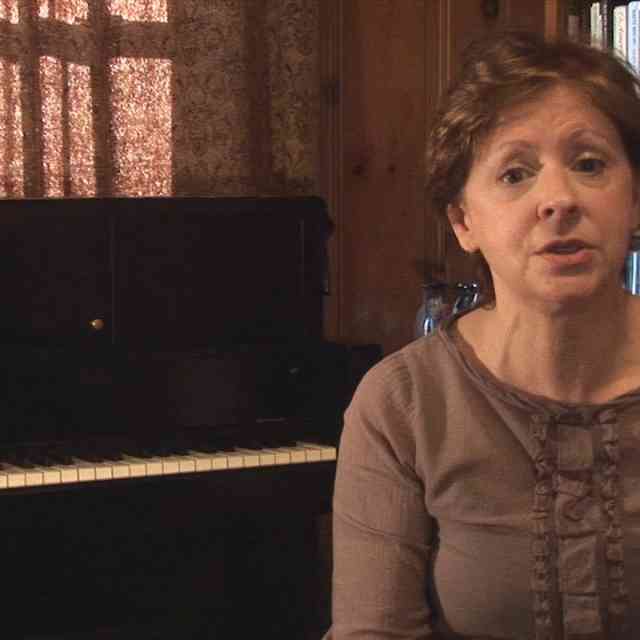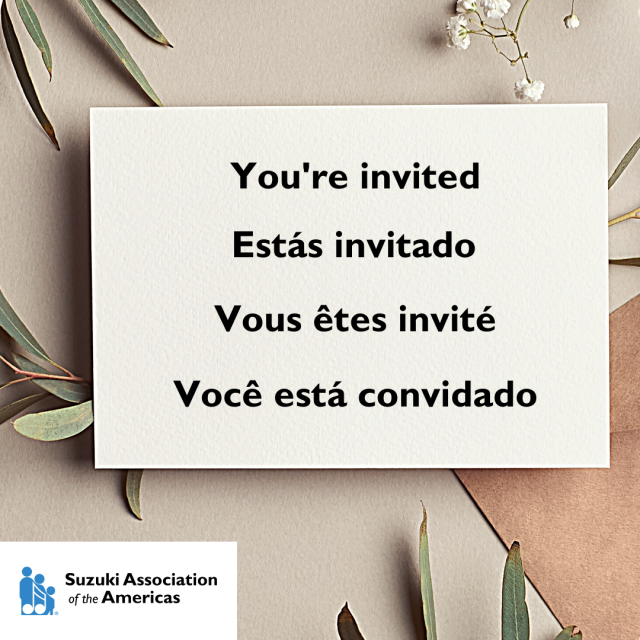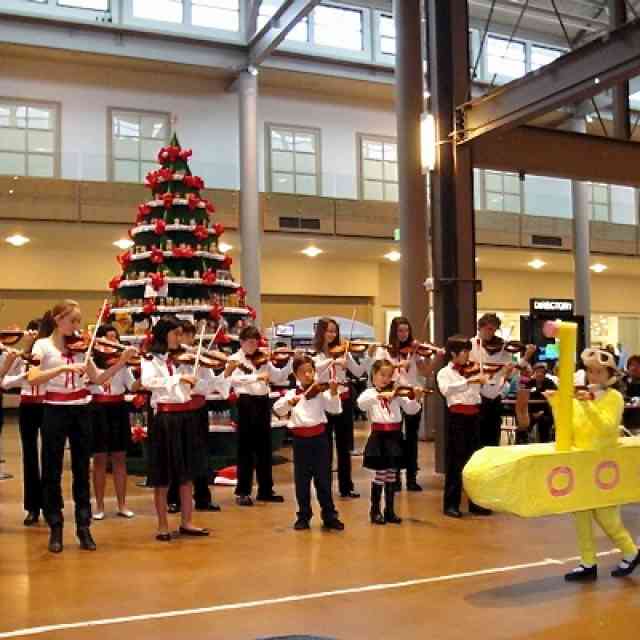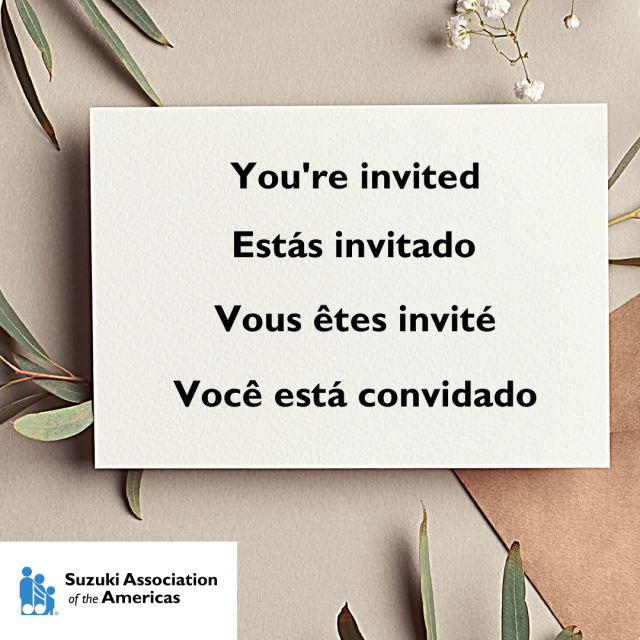
It’s 2008 and my committee has a quandary in front of us.
We’re trying to figure out how to move 150 cello students and their instruments, chairs, music, rockstops, water bottles, and sack lunches through a quarter-mile dim backstage maze of the largest performing venue in our city—without parents. This is the puzzle of the moment, but it doesn’t address the dilemmas of how 150 said cellists will travel safely through levels of underground parking, or how the group of more than 1,500 violin, viola, bass, guitar, flute, harp, piano, voice, and organ students will perform in unison across a football field sized concert hall for the finale of the concert.
Actually, you already know the ending of this story. After nine months of practice, four various days of rehearsals, and the three-hour concert, whatever confusion, hunger, boredom, accidents, hurt feelings, and frustration occurred—it all melted away. The shared musical experience of thousands coming together was not perfect, but it was a unique and powerful moment in our lives we will never forget. The qualifiers of age, race, geography, socio-economic status, instrument, language, religion, and political opinions were invisible for some sublime moments.
Leaving those sublime experiences aside for the moment, let’s instead shine the spotlight on the metaphorical scaffolding, blocking, and choreographing that create these experiences. Let’s talk about the importance and benefits of the volunteer networks behind the scenes.
In 2016 I was enlightened about the importance of these networks while listening to an episode of the Freakonomics podcast. Host Stephen J. Dubner looked at how social networks are not just beneficial but essential to both individual and societal health. Dubner interviewed two social economists. First was David Halpern, a behavioral scientist working since 2010 in the government of the United Kingdom and author of Inside the Nudge Unit: How small changes can make a big difference. Next was Bob Putnam, a professor of public policy from Harvard, and author of Bowling Alone: The Collapse and Revival of American Community. For both of them, their work of the past decades revolves around patterns of civic behavior they call “social trust.”
What is social trust? According to the Pew Research Center, “Social trust is a belief in the honesty, integrity and reliability of others—a ‘faith in people.’ It’s a simple enough concept to describe. But it’s never been easy to figure out who trusts, or why.”
What is the impact of this social trust? In the words of David Halpern, “Levels of social trust, averaged across a country, predict national economic growth as powerfully as financial and physical capital . . . It is also associated with many other non-economic outcomes, such as life satisfaction (positively) and suicide (negatively). In short, it’s not much fun living in a place where you don’t think most other people can be trusted. Low trust implies a society where you have to keep an eye over your shoulder; where deals need lawyers instead of handshakes; where you don’t see the point of paying your tax or recycling your rubbish (since you doubt your neighbour will do so); and where you employ your cousin or your brother-in-law to work for you rather than a stranger who would probably be much better at the job.”
Bob Putnam’s work lead him to see that social trust was created by social networks. He arrived at this understanding as he was studying the vast disparity in government functionality in different regions of Italy: some were highly corrupt and dysfunctional, others were more honest and well governed. When he looked closely at the differences in these communities, he found that the best working governments “depended on a dense civil network.” The highest functioning governments were interconnected with a society that had multiple and strong social networks—the Italian equivalent of PTA, Rotary, and Bowling clubs.
Not only was the government influenced positively by these strong social networks, but the networks had personal value to people belonging to them. It was these social networks that provided connections to people who brought soup and comfort when there was family illness, connections to new employers, and enrichment to individuals by being in proximity to people from slightly different life circumstances.
Putnam describes two kinds of connectivity within social networks: bonding and bridging. Some social networks serve the purpose of bonding the existing members closer together, or becoming closer to people who are similar to one’s self. These are the close friends and family members who show up when times are hard and gather in times of celebration. This community is so essential that studies show when it is missing, the health effects are statistically similar to being a habitual smoker. The other kind of social connectivity, bridging, serves to bring together people from disparate backgrounds and connect them towards a shared purpose without which they might not have met.
With this understanding of the importance of bonding, bridging, and social trust, let’s look at the organizations of and within our Suzuki community.
There is great bonding that happens in our Suzuki community. People report feeling like family coming together at an institute or conference after months or years apart. Suzuki colleagues have rallied around those who have been ill or in need of comfort. Relationships can have a precious longevity, and we deeply honor those who have been practicing Suzuki teaching for their entire lives.
The existing networks of the SAA also create bridging connections. For example, in our Affiliated Chapters, leadership, teachers, parents, and students of all ages gather, despite large geographical distances, and across socio-economic differences. Yes, a certain amount of privilege is associated with all families who can afford music lessons, but within that group there are families for whom paying for lessons is an enormous sacrifice and those for whom it is no sacrifice at all. Within our Chapters, we have the chance to bond more closely with like-minded colleagues, but also to bridge to those less familiar, and even bridge out to our extended communities through the power of shared musical experiences.
Dr. Suzuki also practiced these patterns of bonding and bridging in the networks around him, and encouraged others, in so many words, to do the same. Reports of his studio describe it as a place of close connection—spending many hours together, sharing food, celebrating each other’s accomplishments, and comforting when life outside the studio was amiss.
He also exemplified bridging in the networks he created with the famous international tour groups in the 1960s and 70s.
Can you imagine? Traveling internationally with children, instruments, and luggage, across boundaries of culture, age, geography, and language 50 years ago. Of course this was all without cell phones, instant maps, or Google Translate. What a tremendous amount of volunteer work behind the scenes must have happened for this international musical feat! Similarly, what an enormous mark was made on the world as many music teachers in this country learned for the first time about the potential of children and the power of Suzuki’s philosophies. What kind of network of educators, parents, students and citizens came together to create this experience? How close did they become to each other, and what connections, what social trust, were built not just with their audiences, but within their group’s natural social differences as well? As Dr. Suzuki said, “Teaching music is not my main purpose. I want to make good citizens.”
However it happened, it must have been a tremendous amount of work. I imagine it was this kind of work that inspired another favorite Suzuki quote: “To make a resolution and act accordingly is to live with hope. There may be difficulties and hardships, but not disappointment or despair if you follow the path steadily. Do not hurry. This is a fundamental rule. If you hurry and collapse or tumble down, nothing is achieved. . . Without stopping, without haste, carefully taking a step at a time forward will surely get you there.”
With this in mind, I would like to encourage you to consider the networks of bonds and bridges in your own life. Consider the bridging and building that you can do by engaging with your local SAA Affiliated Chapter, an SAA conference, leadership retreat, institute, or weekend workshop. Consider not just attending, but joining in the network behind the scenes. Yes, meetings, boards, and committees can feel painfully slow and antiquated in this age of instant information access, three-second sound bites, and social ties one click away. Nevertheless, it is in these networks, when people work face-to-face and share real-time experiences, that connection and social trust is built. Drive the extra miles to an event, renew your membership, show up for meetings, learn what your Chapter is offering, reach out to volunteer your time to build your own connections and help them bridge out to your community. It is strong volunteer networks that benefit the entire civil system around us, as well as our own personal well-being.
True, it is not easy. Remember the 1,500 students coming together to perform? That day of sublime shared musical experience was personally uncomfortable. This introverted, full-time mom of three kept wishing for my couch, my stretchy pants, and time for chopping away at the mile long to-do list. I’m sure I wasn’t alone, since it took a team of dozens to create the event. All of us put in hours that were tired, hungry, hot, cold, and socially exhausting, but it felt important to bring together our Suzuki community to one place, despite differences in region, age, instrument, race, religion, socioeconomic status, and ability. Clearly an event of this size is unusual and unrepeatable in many areas, but the point is not this particular event—it’s what any community volunteer network can create, whether your group is two gathering for lunch or hundreds gathering for a public performance. The bonds and bridges created will benefit us individually as well as collectively.









